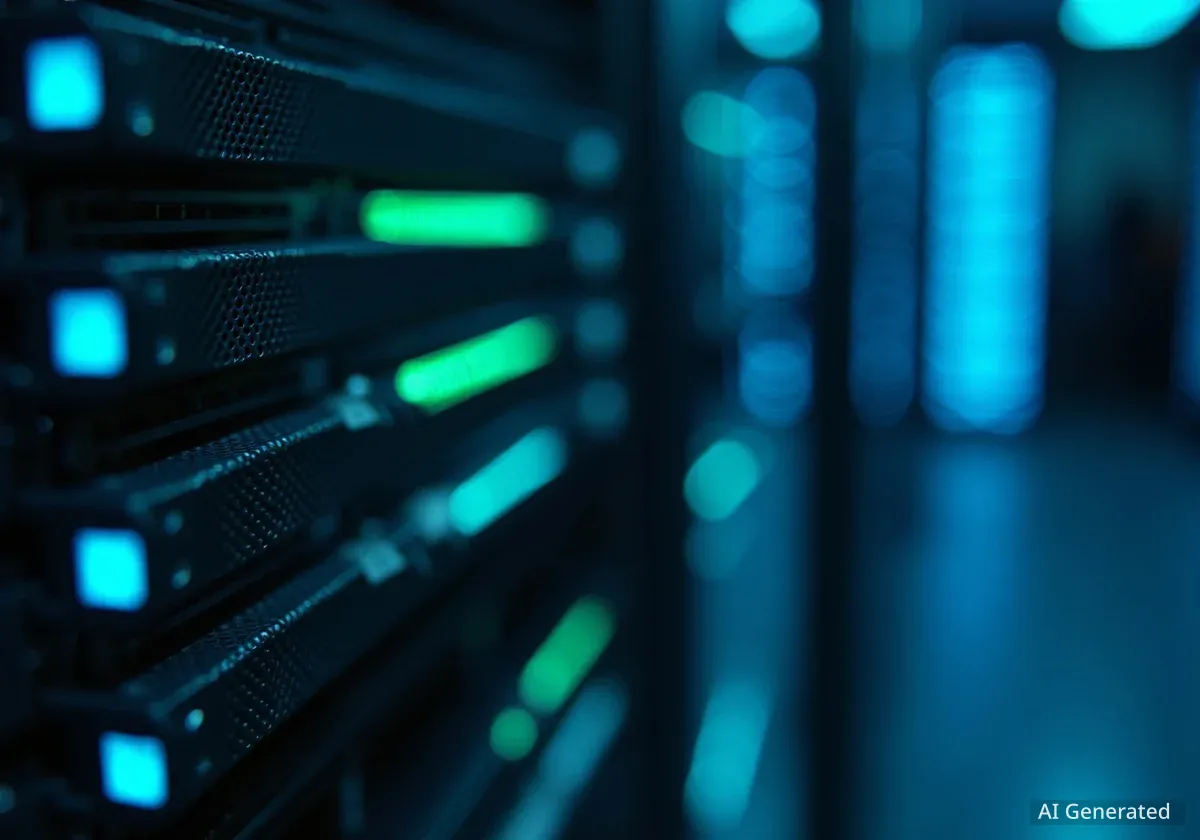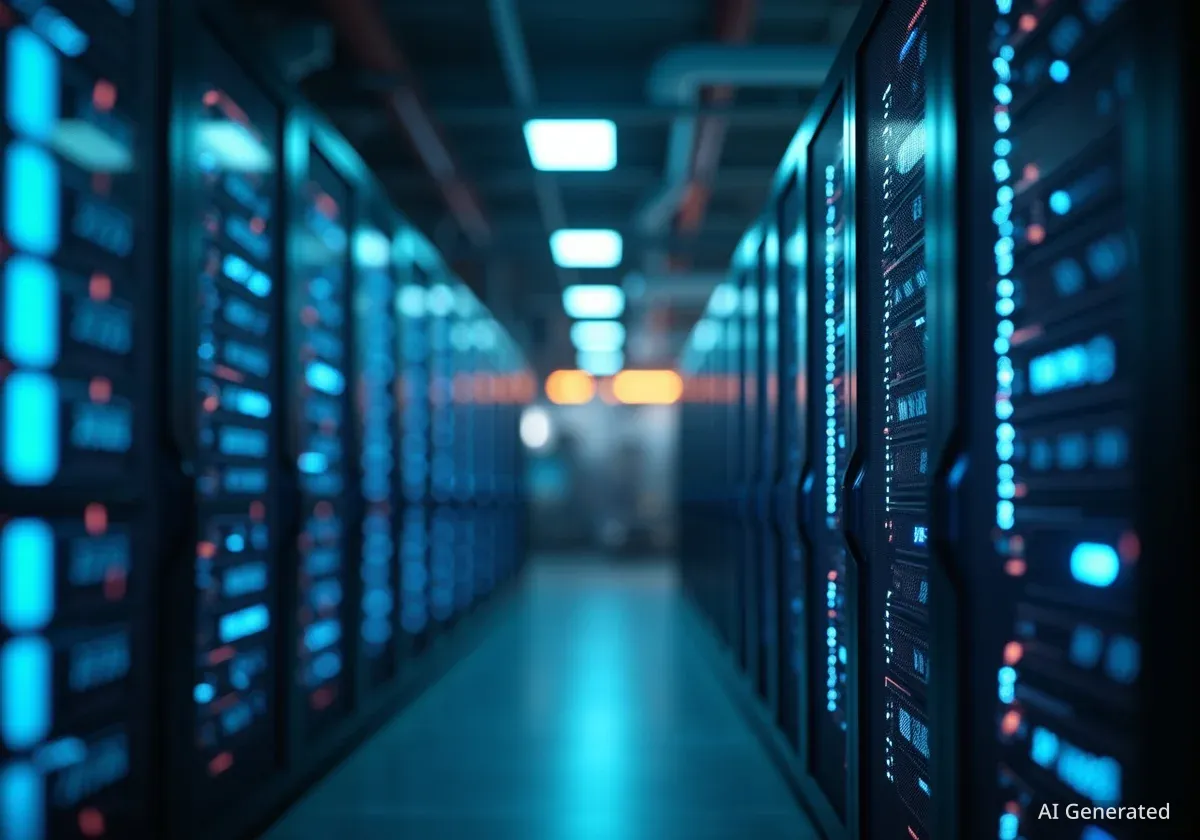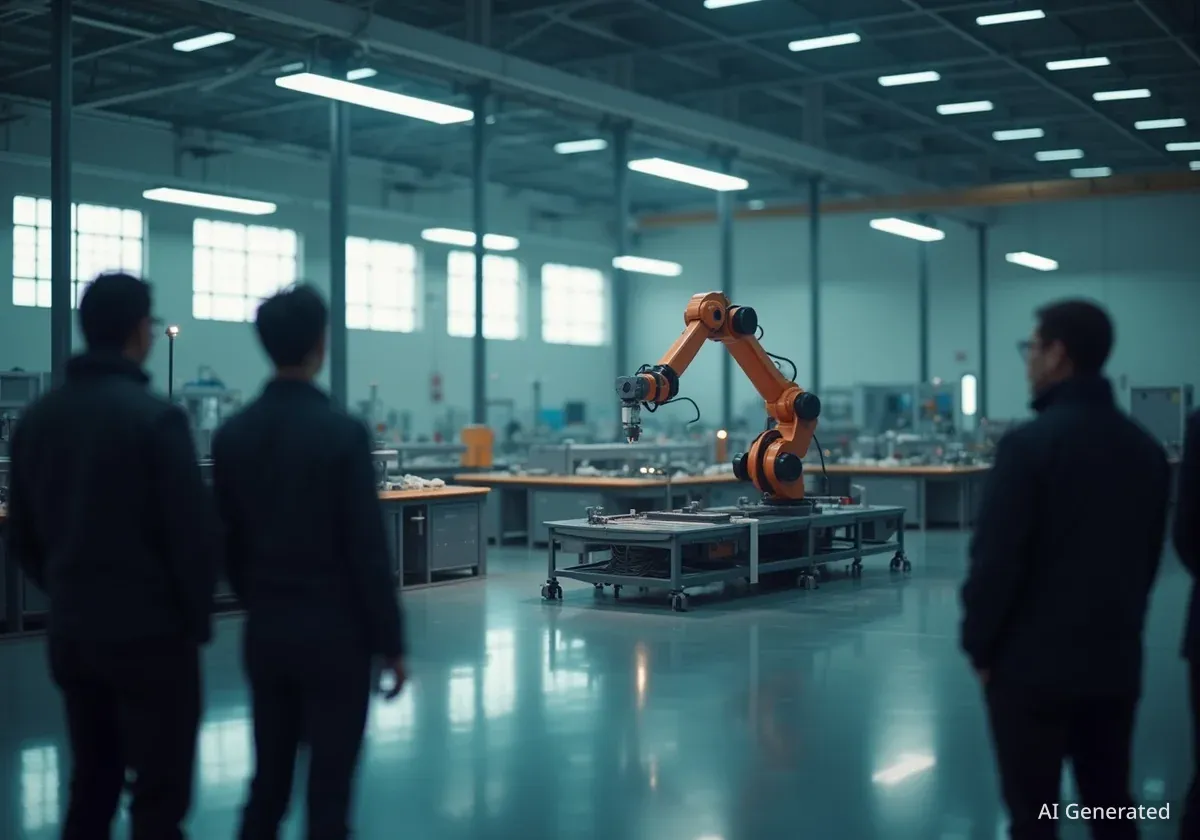Minneapolis Federal Reserve President Neel Kashkari has stated that massive investment in artificial intelligence data centers could lead to higher borrowing costs for consumers, potentially offsetting the effects of any future interest rate cuts by the central bank. Speaking at a recent summit, Kashkari also expressed skepticism about claims that AI will rapidly displace a large number of U.S. workers.
His comments provide a nuanced perspective on the economic impacts of AI, suggesting that while the technology's effect on the labor market may be gradual, its influence on capital markets and interest rates could be more immediate.
Key Takeaways
- Neel Kashkari believes large-scale investment in AI data centers is diverting capital from other sectors like housing.
- This capital shift could increase borrowing costs, such as mortgage rates, even if the Federal Reserve lowers its policy rate.
- Kashkari is skeptical that AI will cause widespread job replacement in the near future, citing the slow adoption rates of past technologies.
- He supports gradual, measured interest rate cuts to protect the labor market without overheating the economy.
AI Investment and Its Effect on Borrowing Costs
Neel Kashkari outlined a significant economic consequence of the ongoing boom in artificial intelligence. He argued that the immense capital required to build and operate AI data centers is creating competition for investment funds that might otherwise go to different sectors of the economy, such as residential construction.
This competition for capital, he explained, could drive up long-term borrowing costs for consumers and businesses. The primary concern is that even if the Federal Reserve implements interest rate cuts to ease financial conditions, the impact might not fully translate to lower rates for things like home loans.
Capital Diversion from Housing to Tech
According to Kashkari, investors are drawn to the high returns offered by AI data centers. This makes them a more attractive destination for capital compared to projects like building new homes or apartment complexes. This diversion of funds can create scarcity in the capital market for housing, naturally pushing interest rates higher for that sector.
"Even if the Fed embarks on one or more interest rate cuts, it may not translate into lower mortgage rates because the capital that would have been building homes or apartment buildings is being diverted to build data centers which are generating a stronger investment return," Kashkari stated at the Star Tribune's North Star Summit 2025.
This analysis suggests a potential structural shift in the economy where the demand for technological infrastructure directly influences consumer financial products. It presents a new challenge for policymakers trying to manage economic growth and affordability.
Skepticism on Widespread AI Job Displacement
While the financial impact of AI investment may be immediate, Kashkari expressed strong doubts about the technology's short-term effect on the labor market. He challenged the narrative that AI is on the verge of replacing a significant number of American workers.
He pointed out that major technological innovations throughout history have typically taken a long time to be fully integrated into the economy and to have a measurable impact on productivity and employment. Kashkari believes AI will likely follow a similar, more gradual path.
Historical Precedent for Slow Tech Adoption
Kashkari noted that while some large companies have made bold statements about using AI to freeze hiring or reduce headcount, the actual evidence of widespread job replacement is not yet apparent in economic data. He remains unconvinced that the current slowdown in the job market is primarily driven by AI adoption.
Instead of AI, Kashkari identified other factors influencing the economy, stating that tariffs are contributing to both price increases and a slowdown in economic activity.
His perspective contrasts with that of others in the tech industry, such as OpenAI's chief economist Ronnie Chatterji, who shared the stage with Kashkari and argued that AI will significantly enhance productivity.
"We're hearing a lot of grand declarations, but we're not seeing the evidence yet," Kashkari said. "I'm skeptical that you're seeing a lot of workers being replaced with AI right now. It feels to me like it's way too soon."
He clarified his view that AI tools are more likely to excel at performing specific, narrow tasks rather than serving as an all-purpose technology capable of replacing complex human roles entirely.
Federal Reserve Policy and Economic Outlook
Regarding monetary policy, Kashkari advocated for a cautious and measured approach. He reiterated his support for the Federal Reserve's recent quarter-percentage-point interest rate cut and suggested that similar small reductions at the next two meetings would be appropriate.
The goal of these gradual cuts, he explained, is to protect the U.S. labor market from weakening further without stimulating the economy too aggressively. He warned against the potential consequences of drastic rate cuts, which he believes are not justified by current economic conditions.
Advocating for Cautious Rate Adjustments
Kashkari laid out a clear risk associated with overly aggressive monetary easing. He cautioned that such a move could lead to an undesirable economic scenario with two key features:
- A very low unemployment rate: While seemingly positive, this could signal an unsustainable level of economic activity.
- Very high inflation: This would occur as the economy becomes "effectively overheating," eroding purchasing power for consumers.
His stance underscores a central challenge for the Federal Reserve: balancing the dual mandate of maintaining stable prices and achieving maximum employment. Kashkari's comments suggest he favors a strategy that prioritizes stability and avoids introducing unnecessary volatility into the economy.
His analysis provides a comprehensive view of how a new technological force like AI is creating complex and sometimes contradictory pressures on the U.S. economy, influencing everything from monetary policy and capital markets to the future of the labor force.





